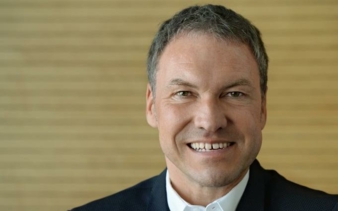13/08/2019 – The summer interview – with Olaf Schmidt, Messe Frankfurt — auf Deutsch lesen
Techtextil/Texprocess: As one fair ends, the next one begins
While the success story for 2019 is still being written, the sixth edition of the twin fairs in 2021 is already taking shape.
textile network spoke to Olaf Schmidt, Vice President Textiles & Textile Technologies at Messe Frankfurt, about the latest ideas for 2021.
textile network: Techtextil and Texprocess took place concurrently for the fifth time. What conclusions have you drawn?
Olaf Schmidt: The twin fairs stood out for three main reasons: they attracted plenty of top decision makers, an international audience and higher levels of exhibitor satisfaction than ever before. The textiles and apparel industry showed itself from its most progressive side, lifting the mood across the industry in what are proving to be challenging times.
textile network: The concept to reflect the entire supply chain appears to have worked then?
Olaf Schmidt: With a total of 1,818 exhibitors from 59 countries and around 47,000 trade visitors from 116 countries, last May saw the biggest ever editions of Techtextil and Texprocess in Frankfurt. We have proven once again that both events are leading international platforms for users of technical textiles from a diversity of different industries and for manufacturers of apparel, fashion, upholstered furniture and leather products. Across Europe, technical textiles are one of the strongest sectors in the textiles and apparel industry. Featuring highly innovative exhibitors, Texprocess is synonymous with high-tech textile processing, presented in a concentration that can’t be found anywhere else. This overall package is what makes our twin fairs so unique.
textile network: Do you think that the five Microfactories on display succeeded in creating lasting momentum?
Olaf Schmidt: Texprocess placed the emphasis on digital solutions for the industry – from fully networked production lines in the shape of Microfactories to neural machines and Cloud-based collaboration between designers, product developers, manufacturers and the trade across international borders. Digitalisation and networking in the industry have gained momentum again. The Microfactories gave attendees an impression of how integrated textile processing works and where its added value actually lies for processors and customers. We made a special effort to ensure that the processing not only focused on clothing but also technical textiles and leather.
textile network: Exhibitors from China and the USA were not particularly well represented this time. How do you explain this?
Olaf Schmidt: Frankfurt clearly attracts exhibitors from all over the world. Europe was very well represented. The twin fairs also attracted 42 exhibitors from the USA and 139 from China, making China the third strongest country for exhibitors at both fairs. The USA was in 12th place at Techtextil and 10th place at Texprocess. It’s important to remember that we have offshoots of the twin fairs in both countries, so Techtextil North America and Texprocess Americas as well as Cinte Techtextil.
textile network: Compared to the last special show in 2017, the Urban Living Area on Level 4.2 did not attract much footfall.
Olaf Schmidt: The foyer in Hall 4.2 provided us with an attractive, light and airy space for the special event “Urban Living – City of the Future”. The special area differed greatly from the last one. We made a conscious decision to ask Creative Holland, Stijlinstitut Amsterdam and Refunc architects, so firms from the Dutch creative scene, to climb on board with us. This enabled us to shed light on technical textiles in urban environments from a design-led angle. This may have been a little unexpected for some of our visitors but, going on the feedback we’ve received, it attracted a completely new and user-orientated audience. This is definitely the direction we want to be moving in.
textile network: Will you be staging a fashion show again in 2021?
Olaf Schmidt: The Innovative Apparel Show has met with a great response from visitors. It has taken place at the past two fairs in collaboration with fashion schools and universities and has featured innovative fashion made from technical textiles. As far as the concept for the twin fairs in 2021 is concerned, I can’t make any comments at this moment in time. What is important is that we continue to bridge the gap between the material, its creative and functional application and the ways in which it is processed.
textile network: Which new trends have you identified for textiles and technical textiles?
Olaf Schmidt: We are the globally leading supplier of trade fairs along the entire textile supply chain, so from the yarn to the made-up product, including all manufacturing and processing technologies. Our Texpertise Network covering events in places such as Africa, Argentina, China, India, Russia and the USA last year attracted more than 22,000 exhibitors and over half a million trade visitors. Sustainability, of course, is an important trend with great market potential, especially in conjunction with textile functions. Our “Sustainability at Techtextil and Texprocess” feature shone a light on the sustainability approaches of our exhibitors – it was a great success. In our opinion, sustainability and innovation are closely entwined. For this reason, we are consistently expanding on this theme and mixing in more content from our other textile fairs such as Heimtextil and our sustainable fashion event Neonyt at Berlin Fashion Week. In this context, we are also placing the topic of technology higher up on the agenda. Digital solutions are gaining importance whilst paving the way for more sustainable production and processing. We see great potential here for the future.
Mr Schmidt, many thanks for talking to us!
The interview was conducted by Hans-Werner Oertel on behalf of textile network.




